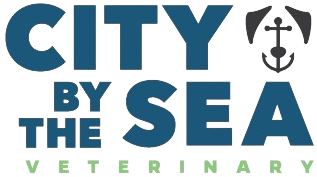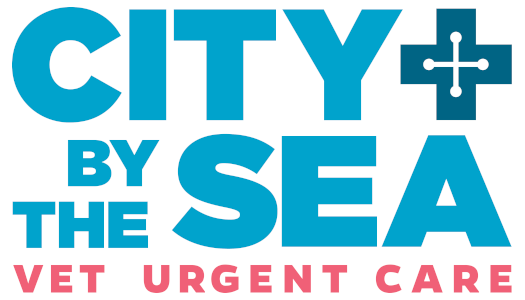
Keratoconjunctivitis Sicca (KCS), commonly called dry eye, is frequently diagnosed in our canine companions and seen rarely in cats. The tears produced by a healthy eye have many functions including lubricating the surface of the eye, protecting the eye from irritants, and being antibacterial. Without adequate tear formation, the tissues around the eye become red and inflamed with thick yellowish discharge. Chronic irritation of the cornea leads to the accumulation of brown pigment and vision loss. The dryness also predisposes the cornea to painful ulcerations.
There are multiple reasons a dog can develop KCS. By far the most common cause is immune mediated destruction of the tear glands. Predisposed breeds include the English Bulldog, American Cocker Spaniel, Shih Tzu, Lhasa Apso, Cavalier King Charles Spaniel and Pug. A congenital lack of tear glands, especially in certain lines of Yorkshire Terriers, has been found infrequently. Anesthesia can temporarily decrease tear production. Prolonged prolapse (cherry eye) and/or removal of the gland of the third eyelid can also lead to decreased tear production. Some drugs, especially sulfa- containing antibiotics like trimethoprim-sulfa, can temporarily or even permanently affect tear production. Finally, a loss of nerve function from eye/orbit trauma or other inflammatory disease can lead to a neurogenic form of KCS.
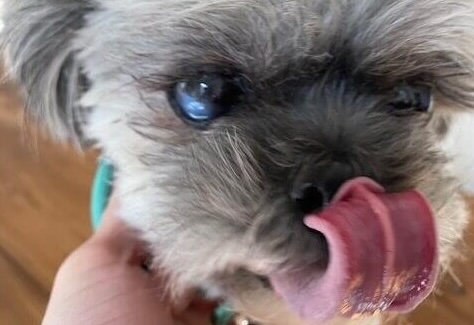
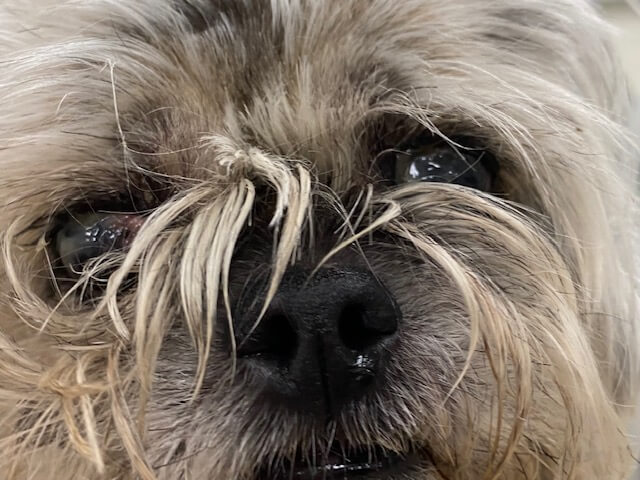
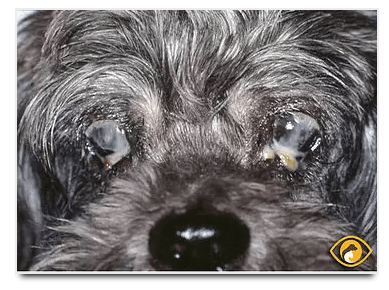
Diagnosis of this condition is made by measuring tear production via the Schirmer Tear Test (STT). Testing is performed by inserting a special paper test strip under the lower eyelid for 60 seconds. A normal response is over 15mm in a minute. Individuals below this level have KCS with severe cases registering less than 5mm in a minute. Fortunately, most cases of KCS can be managed with drugs (cyclosporine and/or tacrolimus) that both decrease the immune mediated destruction of the tear glands as well as stimulate tear production. These medications are administered either as an eye ointment or eye drop and increases in STT are generally seen within 3 weeks. These drugs must be given lifelong and are typically administered 1-3 times daily depending on the severity of the case and response to treatment. Affected dogs should have regular exams to check their eye health and tear production.
Artificial tears are sometimes combined with the tear stimulating medication to provide additional lubrication. In cases of neurogenic KCS, the cholinergic agent pilocarpine is used to stimulate tear production. Sometimes antibiotic eye drops or ointments are needed to treat secondary infections. A special surgery called parotid duct transposition can be performed by a veterinary ophthalmologist in cases of severe non-responsive KCS. In this procedure a small salivary duct is moved from the mouth to the eye and the eye is then bathed in saliva to keep it moist. This surgery is difficult and there are significant side effects that make medical management much more desirable.
Please contact the team at City by the Sea Vet if you have any concerns or questions about your pet’s eye health.
References and Further Reading:
